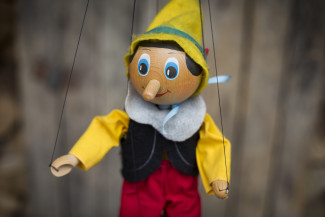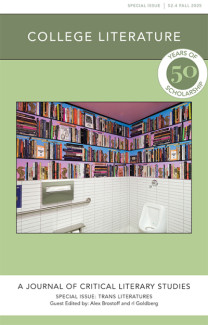
Johns Hopkins UniversityEst. 1876
America’s First Research University
Celebrating World Doll Day

June 8, 2019, is World Doll Day, and the most important attribute of these playthings – Jerry Griswold points out in this excerpt from Feeling Like a Kid – is how they are alive.
The very young child, psychologist Jean Piaget observed, does not distinguish between the animate and the inanimate: the youngster who bangs her knee on a table, for example, goes back and strikes the offending table. For the very young, the whole world is alive–from talking dolls to the North Wind.
It’s not surprising, then, that in children’s stories we sometimes encounter talking animals interacting with talking toys. The evil Mouse King exchanges challenges with a household object in E. T. A. Hoffman’s Nutcracker. The villain Manny Rat discusses the meaning of life with a tin toy in Russell Hoban’s The Mouse and His Child. And the wily Fox and Cat parlay with a puppet in Carlo Collodi’s Pinocchio.

This aliveness of toys is important when the young play. Dolls have tea parties. Teddy bears talk. Stick horses gallop. From the point of view of children, living toys actively participate in their lives; and toys do so, as it were, from their side and at their own initiative. This is a way of thinking peculiar to childhood, but not an unfamiliar one. Raise the subject at a cocktail party and some adults can still recall how, when they were young, they would check in the morning to see whether their dolls had moved overnight.
Jerry Griswold is professor emeritus of literature at San Diego State University and former director of the National Center for the Study of Children’s Literature. He is the author of seven books, including Audacious Kids: The Classic American Children’s Story and Feeling Like a Kid: Childhood and Children’s Literature, both published by Johns Hopkins University Press.


